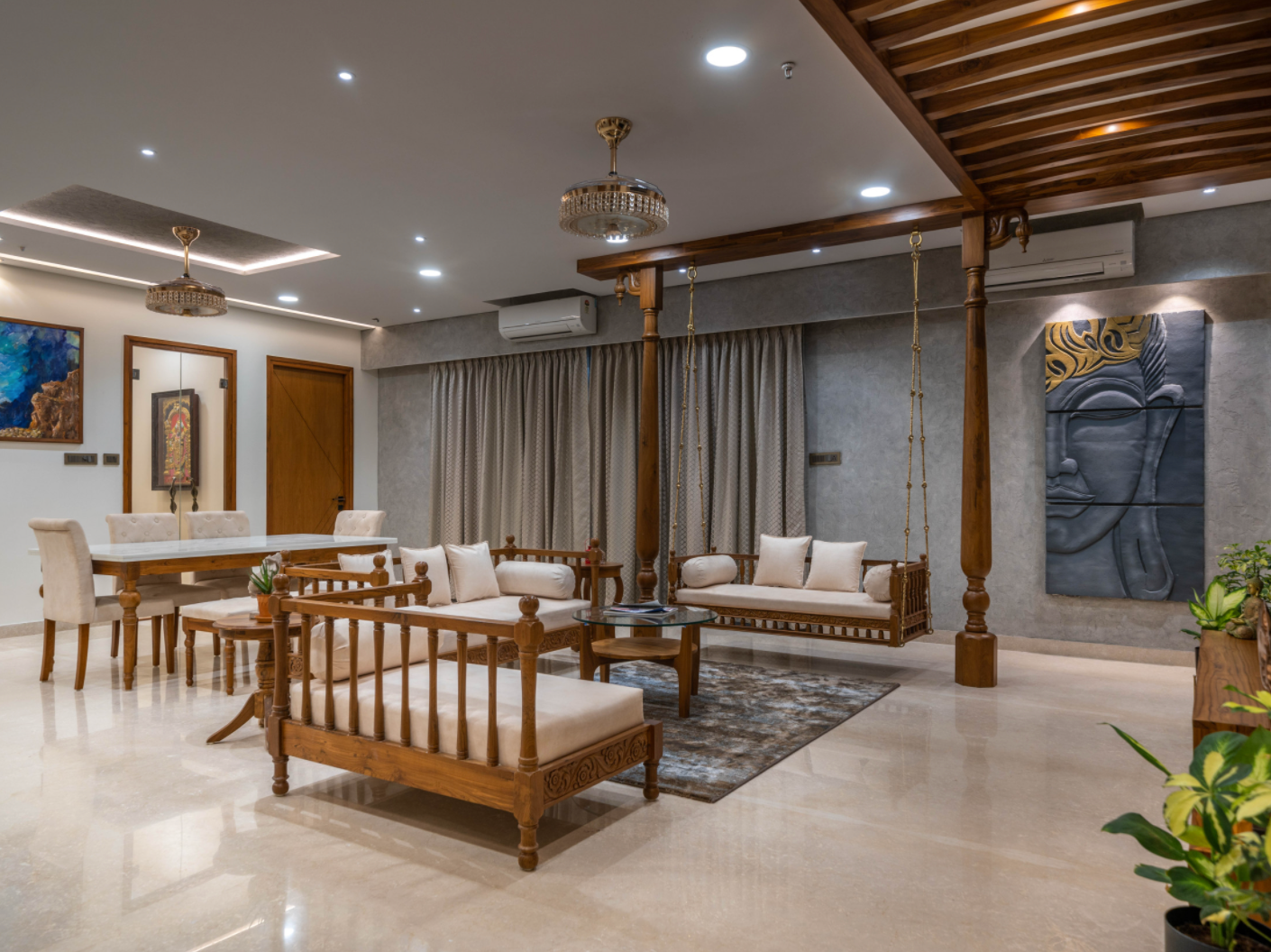
(Photo Credit: Ricken Desai Photography)
Just hearing the word porch swing conjures distinct images in the mind’s eye of most Americans. Grand Southern-style wrap around porches, honey-hue pitchers of sweet tea, and listless summer afternoons.
There is no denying the whimsical Americana charm associated with wooden porch swings state-side. They welcome long conversations with loved ones or become a cozy respite to curl up on with a good book. The rhythmic swaying is calming enough to put anyone at ease far and beyond the Mason-Dixon divide.
In fact, cultures all over the world have long embraced the soothing nature of a swing, including hundreds of miles away in India where the traditional Indian swing, called a jhula (jhoola), maintains its familiar charm for younger generations.
As described in an Economic Times article, the indoor Indian swing, once a staple of Mumbai apartments, has become less common over the years but small reminders of their presence have not been lost to time. The article paints this picture:
“In many older Mumbai apartments if you stand near the windows overlooking the street and look up you will see two hooks on the ceiling. Sometimes they have been used to hang plants or a washing line, but you know there was a time when they once supported a jhoola, the large swinging seats that were common in houses across India.”
The article summaries, that while jhulas might have become a luxury for some in Mumbai, for certain people swings were never out of demand or fashion. Like with so many traditional cultural staples, many are seeking a modern alliteration of this classic, which is why the contemporary Organic Swing is seen as a popular alternative to the customary Indian swing.
The History of the Indian Swing, the Jhula

Deccani Miniature Painting of Raga Hindola. (Source: The Untold Story of India's Seats and Chairs Museum of Design)
Elevated seating has long held a special place in Indian culture. As outlined in the immersive virtual Google Art & Culture exhibit The Untold Story of India's Seats and Chairs Museum of Design, India has developed a form of seating suitable for every occasion though out the centuries as evident by Buddhist relief sculptures dating back as early as 200 BC.
Eventually, the jhula, also called jhoola, the hinchka or hindol, became “ubiquitous in Hindu, Muslim and Jain homes,” according to the Economic Times piece.
“Jhoolas are woven into the fabric of Gujarati life and carved wooden cradles are handed down generations with each new baby rocked in the ancestral jhoola,” the article continues.
These swings have been associated with festivity and celebration for centuries. Even today, the Google Arts & Cultural exhibit explains “the regions of Mathura and Vrindavan in northern India celebrate the Jhulan (Swing) Festival with elaborate swings, song, and dance.”
In their simplest forms, and not unlike the ones Americans are familiar with seeing, Indian swings were constructed with a wooden board that was suspended from hooks or tree limbs. More intricate versions were also made from silver or brass and decorated with trimmings, bolsters, and gaddas (mattresses), according to the Arts & Cultural exhibit.
These swings were suspended inside homes or in outdoor courtyards. Swings that were mounted inside were considered a status symbol since the home was large enough to accommodate the size of a hanging indoor Indian swing.
The grandiosity of the jhulas may have caused them to fall out of popular favor, according to the Economic Times. “[In] cities like Mumbai [Indian swings] have become victims of the trend to enclose verandahs and seal houses against the noise, dust and chaos of the street... In an open verandah, the jhoola offered a pleasant perch to watch the world outside; inside a house it can seem cumbersome and out of place. As time passes, the swings were removed, leaving just the hooks.”
The Modern Day Alternative to a Traditional Indian Swing

If you Google “Indian Swing” today, you’ll find indoor swings characterized by ornate wooden carvings. And while they aren’t quite as commonplace, jhulas still hold a warm place in people’s heart for their sense of whimsy.
“Perhaps it is the memories they carry, as much as that soothing rocking motion,” writes the Economic Times.
Like many tried and true inventions, there have been modern developments in the past several years that have transformed the traditional notion of a swing.
Organic Swing puts a modern spin on the old classic. The minimalist design swaps traditional wood-slat swings in favor of a look that’s befitting of today’s homes both in the United States and internationally.
Organic Swing’s slender steel frame and inlaid cypress boards combine contemporary style and modern versatility that lasts a lifetime. But it’s the interchangeable backrest design that makes Organic Swing really stand out.
The two removable backrests can be easily reconfigured into multiple different positions by dropping the pieces into an array of square holes around the perimeter of the seat. It can transform from a traditional porch swing to a luxurious lounger or an intimate face-to-face conversation space.
You can face the seats forward or backward depending on the view you want. A back-to-back orientation can facilitate more focused personal time for two individuals, regardless if it’s mounted indoors or outside.
Like with so many traditional cultural staples, many are seeking a modern alliteration to this classic, which is why Organic Swing is becoming seen as a popular alternative to the traditional Indian swing.



